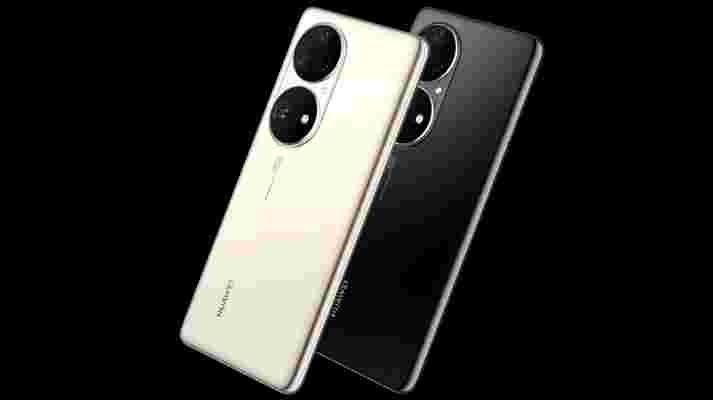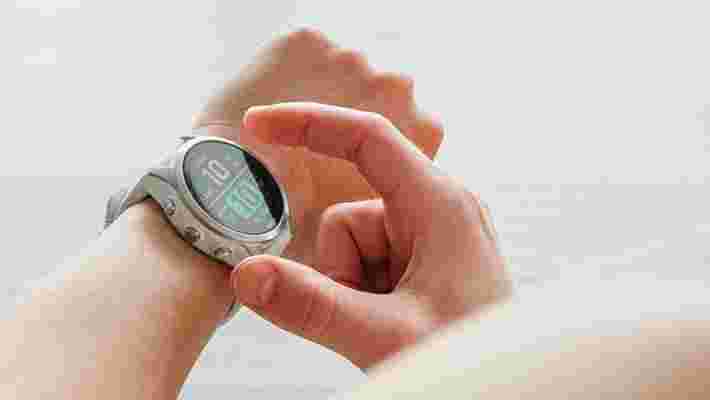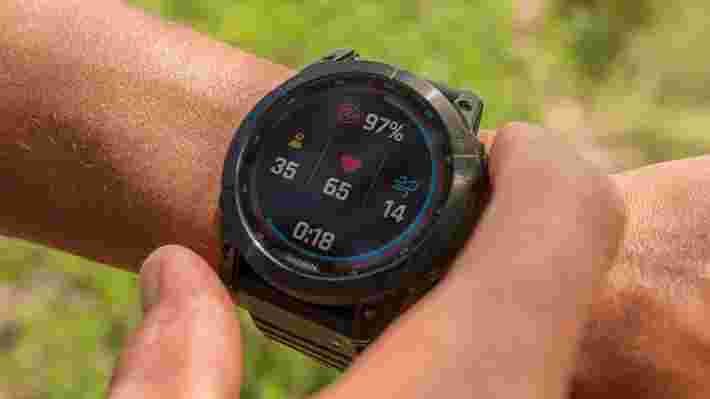Are you excited for Moon Knight? You should be. While the anti-hero won't be well-known to many, its two main stars in Oscar Isaac (Star Wars, Dune) and Ethan Hawke (The Black Phone, Dead Poets Society) will be.
But we digress. Moon Knight , the upcoming MCU Disney Plus show , is Marvel’s latest attempt to create entertainment with a wider range of tones and genres, and it picked the perfect team of directors to do so.
And, with the Marvel Phase 4 project comprising six episodes, set to land on Disney's streaming platform on March 30, now is the perfect time to see what we can expect from its visually, tonally and stylistically.
Moon Knight's confirmed directors are Mohamed Diab, Justin Benson and Aaron Moorhead. The former is believed to have directed four episodes, with the latter two working as a duo on two episodes. Although, online rumors suggest that George Clooney has helmed one of the superhero show's entries, too.
Egyptian director Diab is relatively new to western screens, but he’s won plenty of awards from around the world, with nominations and awards from film festivals including Cannes, Venice and Chicago. If you want to check out his work, some of his films – including Clash and Cairo 6, 7, 8 – are on Netflix in certain regions.
The power team we’re looking at here, though, are Moorhead and Benson, who have an impressive history of cult-classic films under their belts. The pair's movies are fantastic at creating eerie atmospheres and plots full of mystery and tension. But their flicks also contain real character stories and stories that are actually resolved, instead of being absolute nonsense like your typical low-budget cerebral-sci-fi story.
The duo are classic do-it-yourself filmmakers, too. They direct, shoot, write – they've even starred in their own work sometimes – and often make the most of low budgets, with great location work and scripts that are the stars of the show.
With Moon Knight's release just over two months away, you're best setting yourself up by checking out Moorhead and Benson’s back catalog. Below, we run through which movies in their filmography you should check out.
Resolution

Resolution marked the first time Moorhead and Benson co-directed a feature, which was also shot by the former and written by the latter.
Set in a cabin outside San Diego, as well as the surrounding hills and towns, Resolution tells the story of a man who handcuffs his drug-dependent friend to help clean him up – but the friend’s own self-destructive habits, unfriendly neighbors and a mysterious force make the endeavor a hard one.
It’s impossible to explain what makes Resolution great without spoiling the gripping ending. It could be accused of being a slow-burner but, even when the sci-fi and mystery elements aren’t present, character development and an uneasily-tranquil tension are a fitting substitute.
As the duo's first film, this is markedly the most low-budget, confined to a cabin and a select few other locations, a limited cast and, for most of its runtime, no special effects. In that way, it’s a far cry from the Disney-funded Moon Knight, but certain themes (which we won’t discuss, for fear of spoiling the movie) provide thematic ties.
Spring

Between Resolution and Spring, Moorhead and Benson worked on a few smaller projects, most notably a section for one of the V/H/S pictures, but Spring is the next movie we’d recommend checking out.
Spring tells the tale of a bereaved US expatriate who travels to Italy and falls for a local woman. It’s certainly not a rom-com though and, as the movie’s poster gives away, that woman has a monstrous secret.
This is a great film for fans of the Lovecraftian-style horror aesthetic, especially in terms of monster design. But, beyond it, there’s a surprisingly prescient story about finding yourself through other people, and the potentially-damaging problems of a reliance on relationships to do so.
It's also an interesting outlier in the filmography we're exploring. While most the filmmakers' movies explore male relationships – The Endless is about brothers, Synchronic depicts co-workers and Resolution showing long-time friends – Spring is about a romantic relationship.
The Endless

Speak to most fans of Benson and Moorhead’s work, and they’ll tell you that The Endless was their introduction to the filmography. It’s the case for this writer and many other people, as it’s arguably the duo’s most popular film.
The Endless is about two brothers, brought up in a cult but left when they were young, who return to the place as adults and notice mysterious aspects of the group that they didn’t before.
As they explore the camp and their understandings of the past, the brothers' relationship begins to break down, before the real forces at play are revealed. Incidentally, the two brothers are played by Moorhead and Benson, showing their acting prowess is as strong as their behind-the-scenes work.
There’s a reason this is considered the entry point into the duo’s filmography – and that’s because it’s an incredible movie. The different aspects of filmmaking, from the script and performances to the shot composition and audio mix, are all woven with impressive skill to create a story that juggles tension and character development.
Like Resolution, some could consider it slow, but there’s enough going on in every scene and shot to keep you guessing. The pay-off, too, is incredibly satisfying, both from a story and character perspective. Seriously, if you’re going to watch one movie we’ve recommended on this list, make it The Endless.
Synchronic
Synchronic felt like a surprisingly big-budget film for Benson and Moorhead when it came out. Now that they’ve got Marvel money, it doesn’t seem as huge, but it marks a change budget-wise and tonally from previous works.
Starring Anthony Mackie (Altered Carbon, The Falcon and the Winter Soldier ) and Jamie Dornan (Billy Elliot, Fantastic 4), it’s about two paramedics working in a city which is plagued by a mysterious designer drug which, when taken, has time-skipping effects.
Like Moorhead and Benson’s previous works, Synchronic focuses on characters rather than the sci-fi concept being explored. But, while The Endless and Resolution focus on barely-understandable malevolent forces that the characters must grapple with, Synchronic is about a feasible alternative future. For that reason alone, viewers might find it a bit easier to watch.
Tonally, it feels a little different to the duo’s previous films, but there a a few nods to previous films present for long-term fans to enjoy.
Honorable mentions
There are many other works by Moorhead and Benson that we'd recommend checking out, too.
Something In The Dirt is one of those – you can’t watch this right now because, at the time of writing, it’s about to debut at Sundance Film Festival. If you’re lucky enough to be attending, though, you'll be able to catch it. And, if you’re based in the US there are tickets still available for virtual screenings.
Something In The Dirt seems like a return to the duo’s roots as do-it-yourself filmmakers: they're the stars once more, with what seems to be a relatively low budget and limited locations. It tells the story of two neighbors who witness paranormal phenomena, whose relationship breaks down as a result – the perfect combination of sci-fi and character development that have become hallmarks of the duo's filmmaking process.
Meanwhile, the pair have also produced a few movies, with two we’d really recommend watching: After Midnight and She Dies Tomorrow.
The first is a relationship drama-slash-horror, directed by Jeremy Gardner and Christian Stella, about a man living in the countryside who’s tormented by a monster after his partner leaves him. It’s an enjoyable story made fantastic by a tense one-take scene near the end, which could well be the best non-horror scene we’ve ever seen in a horror film.
The latter is a horror character drama – directed by Amy Seimetz – about a woman who thinks she’s going to die the next day, and the effect this has on those around her. It’s a great character story and received enough awards attention to make it worth checking out.
Huawei P50 Pro and P50 Pocket are finally launching in more countries
The Huawei P50 Pro isn’t a new phone. In fact, it was announced all the way back in July, but if you’re not in China then you can’t easily buy it - that’s about to change though, with the more recent Huawei P50 Pocket also set to get a wider launch soon.
Huawei Malaysia’s Twitter account has shared that both phones will be unveiled for the country on January 12, and while we doubt many of our readers are in Malaysia, a launch there could mean we’ll soon start seeing the P50 Pro and P50 Pocket in other countries too.
However, we wouldn’t count on necessarily being able to buy them in the UK or Australia, or even maybe outside Asia. Certainly, you’re not going to be able to buy them in the US, thanks to the ongoing Huawei ban .
But the Huawei P40 did land in the UK and Australia so there’s hope for these phones too, we just can't be certain until there’s more concrete news, especially as the Huawei P50 Pro is getting on a bit now, and the Huawei P50 Pocket is likely to be rather niche.
The news of this Malaysian launch did come with another interesting detail though, as the Huawei P50 Pocket will run EMUI 12, meaning Android without the Google apps and services.
That’s a big shift from the Chinese model, which runs Huawei’s own HarmonyOS 2 . If these phones launch elsewhere, we’d think there’s a good chance EMUI 12 will be used in other regions too.

Analysis: why you should care about the Huawei P50 Pro and P50 Pocket
While it’s too early to say for sure whether you’ll soon be able to buy these phones outside of China and now Malaysia, there are lots of reasons to want them.
Beyond typically top-end specs like a 6.6-inch 1228 x 2700 screen with a 120Hz refresh rate, the Huawei P50 Pro really looks to stand out with its cameras, which include a 50MP main snapper, a 13MP ultra-wide, a 40MP monochrome, and a 64MP telephoto, with 3.5x optical zoom and 200x digital zoom.
Huawei often packs some of the best imaging options available into its flagship phones, so these are likely to perform well.
As for the Huawei P50 Pocket, that’s a stylish foldable phone that could give the Samsung Galaxy Z Flip 3 a run for its money, and has an even more interesting camera setup.
This includes a 40MP main camera, a 13MP ultra-wide one which doubles up as a macro snapper, and a 32MP ‘super spectrum’ camera, which allows for fluorescent photography – capturing details that the human eye can’t ordinarily see.
Via GSMArena
Garmin Fenix 7 vs Garmin Epix: top-tier sports watches compared
The Garmin Fenix 7 and Garmin Epix (Gen 2) might look similar, but there are some important differences between the two. If you're thinking of investing in one of these top-tier sports watches, this guide will help you decide which is the right one for you.
There's only one Epix model, but there are eight different Fenix variants in different sizes, some with solar charging, and some with extra-tough sapphire crystal instead of glass covering the face. If you have particularly small wrists or want the longest possible battery life, or enjoy sports like outdoor rock climbing where a regular sports watch may get scratched, then a watch in the Fenix range will probably be the best choice for you.
However, the Epix has one big advantage over Fenix watches: a bright, high resolution AMOLED display, which makes charts, maps and graphics really shine. It's much more vivid than the memory-in-pixel (MiP) displays of watches in the Fenix 7 range, but it does put more demand on the battery, so an Epix watch will need charging more frequently.
These are premium watches, and none of them come cheap, but the base specification Fenix 7 costs significantly less than the standard Epix. However, that price soon increases when you start adding features like solar charging and premium materials such as titanium and leather.
If you've made up your mind, we've rounded up the best prices for the Fenix 7 and Epix right here. If not, read on for more details on both watches.
Watch models
First, it's worth clarifying something – while the new luxury watch is usually referred to as the Epix, it's technically the Epix 2.
The first Epix watch was released in 2016, and was somewhat ahead of its time. It was a touchscreen smartwatch with impressive mapping tools, but it was, frankly, enormous. "If all else fails this beast could probably act as a weapon when slung at a hungry bear," wrote Pocket Lint in an otherwise glowing review.
At a presentation in January 2022, Garmin explained that tech has finally caught up with its ambitions for the Epix, hence its decision to bring back the name.
There's no solar version of the Epix available, and it only comes in one size, but you can take your pick from titanium or stainless steel cases. There's also a model with a sapphire crystal lens, which is more resistant to scratches than toughened glass, though at the time of writing this isn't available in the US.

The Fenix 7 gives you a lot more choice, In fact, it's not a single watch, but an entire range. It's available in 42mm, 47mm, and 51mm models, all of which come in Solar, and Solar Sapphire versions. The two smaller models are also available with standard Corning Gorilla Glass.
These are all the versions currently available:
| 42mm case | 47mm case | 52mm case | |
|---|---|---|---|
| Fenix 7S | Fenix 7 | n/a | |
| Fenix 7S Solar | Fenix 7 Solar | Fenix 7X Solar | |
| Fenix 7S Solar Sapphire | Fenix 7 Solar Sapphire | Fenix 7S Solar Sapphire |
Price
The standard Garmin Epix is more expensive than the standard Fenix 7, but different versions of both watches carry different price tags. Sapphire crystal and solar charging add to the price, as do premium materials like titanium and leather.
The Garmin Epix starts at $899.99 / £799.99 / AU$1,399 for the standard model with a stainless steel case and toughened glass lens. The white and black titanium models cost $999.99 / £899.99 / AU$1,499, and the model with a titanium case, sapphire crystal, and a chestnut leather band is £999.99 / AU$1,549. As mentioned earlier, this last one isn't currently available in the US.
Garmin Fenix 7 watches start at $699.99 / £599.99 / AU$1,049 for the standard 42mm or 47mm version. The top-tier Fenix 7X Sapphire Solar is $999.99 / £859.99 / AU$1,499.
Design
At first glance, the watches in the Garmin Fenix 7 line look very similar to the Garmin Epix. Both are chunky and rugged, with metal-fronted resin cases. There are five physical buttons, with a metal guard around the start button on the top right to protect it from damage and accidental presses
All Fenix 7 and Epix watches are available with a choice of stainless steel or titanium cases. They're all compatible with Garmin's quick-release bands too, allowing you to choose from various silicone, woven, leather, and metal straps.
There are some key differences, though. The most important of these is that (as we mentioned earlier) the Epix is only available with a 47mm case, while Fenix 7 watches are also available in 42mm and 52mm versions.
There's some variation between these sizes, too. Like the Epix, the 47mm Fenix 7 and the 52mm Fenix 7S have exposed screws on the lugs. The 42mm Fenix 7S, however, has a more streamlined look for smaller wrists, and no visible screws.

Beyond that, the only significant design difference between the Epix and the Fenix 7 series is the screen...
Display
Watches in the Fenix 7 line have transflective memory-in-pixel (MiP) displays, while the Garmin Epix has a color AMOLED screen.
That means that the Epix is much brighter and more vibrant, with a fast refresh rate that lends itself well to tools like on-screen animations to guide you through yoga and Pilates workouts. It also has an always-on option, so you don't have to raise your wrist to activate it.
The Fenix 7's MiP screen isn't as striking, but it's clearly visible in most lighting conditions, and has a backlight that can be activated with a press of the top right button. It uses less power than an AMOLED display, which results in longer battery life.
The Epix has a much higher screen resolution, which results in more detailed graphics and maps. The Epix has a resolution of 416 x 416 pixels, while the Fenix range has resolutions of 240 x 240 pixels for 42mm models, 260 x 260 pixels for 47mm models, and 280 x 280 pixels for 52mm models.

Battery life
Watches in the Fenix 7 range have longer battery life than Garmin Epix watches, largely due to the different display technologies used. The Epix's AMOLED screen uses considerably more power than the Fenix 7's MIP display – especially when used in always-on mode.
Here are the maximum battery life figures for the standard Garmin Fenix 7 and the Garmin Epix, both of which have 47mm cases and no solar cell:
| Fenix 7 | Epix | |
|---|---|---|
| Smartwatch mode | 18 days | 16 days (six days always-on) |
| Battery saver smartwatch | 57 days | 21 days |
| GPS only | 57 hours | 42 hours (30 hours always-on) |
| Max battery GPS | 136 hours | 75 hours |
| Expedition GPS | 40 days | 14 days |
If you mostly train outdoors, it's well worth checking out the Fenix 6 solar models, which last a remarkably long time between charges provided they get a regular dose of sunlight. Battery life for the 52mm Fenix 7X Solar is particularly impressive due to its extra large solar cell.
To give you an idea, here are the battery lives of the 47mm Fenix 7 Solar and the 52mm Fenix 7X Solar with three hours of direct sunlight per day. As you can see, size really does matter.
| Fenix 7Solar | Fenix 7X Solar | |
|---|---|---|
| Smartwatch mode | 22 days with solar | 37 days with solar |
| Battery saver smartwatch | 173 days with solar | 1+ year with solar |
| GPS only | 73 hours with solar | 122 hours with solar |
| Max battery GPS | 289 hours with solar | 578 hours with solar |
| Expedition GPS | 74 days with solar | 139 days with solar |
Smartwatch features
When it comes to everyday watch features, the Epix and Fenix 7 are pretty much identical. Both have music storage for 2,000 songs, allow you to control your phone's music player, and offer Garmin Pay for making contactless purchases.
Watches in both lines can receive smartphone notifications, and will alert you to incoming texts and calls. However, unlike the Garmin Venu 2 , the Fenix 6 and 7 don't have microphones that allow you to answer calls from your wrist. You can, however, reject a call with a text message if you have an Android phone.
All Epix and Fenix 7 watches also have super accurate multi-band GPS, and come preloaded with a set of Garmin's detailed maps free of charge. The watches' touchscreen interfaces make it easy to pan around maps, though the higher resolution of the Epix allows you to see more detail and makes map icons clearer.
Fitness tracking
Garmin itself has said that the Fenix 7 series are designed with 'elite' athletes in mind – particularly those who enjoy a range of outdoor sports – while the Epix is perhaps better suited to those who like working out in the gym.
That's largely due to the Fenix 7's optional solar charging; when it comes to actual fitness tracking and training tools, the two watches are extremely similar. Both have Garmin's latest optical heart rate monitor, SpO2 sensor, and temperature sensor, and are capable of tracking heart rate, sleep, blood oxygen saturation, stress, and respiration 24 hours a day.
There are preset profiles for dozens of activities (including triathlon and duathlon), plus training tools to help you monitor and improve your performance, such as real-time stamina tracking. This lets you see how much gas you have left in the tank during a run or bike ride. If your stamina is running low, you might want to ease off the pace, but if you've still got plenty of energy left then you may choose to push yourself harder for the last part of your workout.
You can also use any Fenix 7 or Epix watch to check your seven-day training load on your wrist. This is presented as a bar chart showing your training load each day, the type of training (base, tempo, threshold, speed etc) represented by a color, and whether your tracked activities are having a positive impact on your fitness. You'll also see a number representing your training load that will help you judge if you're at risk of under- or over-training.
Watches in the Fenix 7 and Epix lines can also display a visual race pace predictor, which estimates your time for a 5k, 10k, half marathon, and marathon based on your current fitness, complete with a line graph showing how that prediction has changed as a result of your recent training.
One feature that you'll only get with the Epix is a set of animated workouts that you can follow on your wrist. At the moment there's a handful of programs for Pilates and yoga, but we expect more are likely to come in the future. These make use of the Epix's bright AMOLED display – as do Garmin's Muscle Map graphics, which illustrate which muscle groups you've worked most recently.